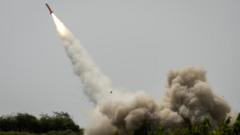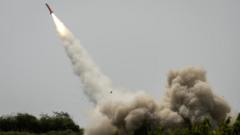The situation surrounding rare earth metal mining in Myanmar highlights a dire conflict of interests amidst civil war, environmental degradation, and international exploitative partnerships.
### War and Resources: The Dark Side of Rare Earth Mining in Myanmar

### War and Resources: The Dark Side of Rare Earth Mining in Myanmar
In Myanmar, conflict-ridden regions are exploited for valuable rare earth metals, primarily serving the Chinese market.
The chaos of civil unrest in Myanmar has precipitated a surge in the extraction of rare earth metals, which are vital for modern technologies such as smartphones and electric vehicles. While these minerals are crucial, the extraction process is highly damaging to the environment and labor-intensive. Currently, Chinese firms dominate the mining landscape, netting vast wealth while leaving a trail of ecological destruction.
With over 300 mines along the border of Myanmar and China, the lucrative industry has flourished despite heightened environmental concerns and the human toll of longstanding conflict. The military's coup in 2021 further exacerbated the exploitation of this critical resource, as significant labor and ecological regulations were suspended. As a result, minerals produced in Myanmar are shipped rapidly to China, often accompanied by dangerous waste that contaminates waterways, aggravating environmental and health risks in neighboring Thailand.
Western nations have placed sanctions on Myanmar’s military regime, yet China continues to strengthen its economic ties with the junta, allowing natural resource extraction to proceed unchecked. Aside from central government actors, numerous militant groups are also capitalizing on this lucrative mining economy, perpetuating violence and environmental destruction in the pursuit of profit.
Environmental activists and local populations remain increasingly alarmed as polluted waters and hazardous waste affect health and ecosystems in the region. With Myanmar's natural resources being exploited in such a lawless environment, the international community faces a critical challenge: balancing economic interests with the urgent need for sustainable practices and human rights.
As global demand for rare earth metals grows, the urgency to regulate this turbulent mining sector intensifies, reminding us that the fight for sustainable futures is as much about where our resources come from as it is about the technologies they power.
With over 300 mines along the border of Myanmar and China, the lucrative industry has flourished despite heightened environmental concerns and the human toll of longstanding conflict. The military's coup in 2021 further exacerbated the exploitation of this critical resource, as significant labor and ecological regulations were suspended. As a result, minerals produced in Myanmar are shipped rapidly to China, often accompanied by dangerous waste that contaminates waterways, aggravating environmental and health risks in neighboring Thailand.
Western nations have placed sanctions on Myanmar’s military regime, yet China continues to strengthen its economic ties with the junta, allowing natural resource extraction to proceed unchecked. Aside from central government actors, numerous militant groups are also capitalizing on this lucrative mining economy, perpetuating violence and environmental destruction in the pursuit of profit.
Environmental activists and local populations remain increasingly alarmed as polluted waters and hazardous waste affect health and ecosystems in the region. With Myanmar's natural resources being exploited in such a lawless environment, the international community faces a critical challenge: balancing economic interests with the urgent need for sustainable practices and human rights.
As global demand for rare earth metals grows, the urgency to regulate this turbulent mining sector intensifies, reminding us that the fight for sustainable futures is as much about where our resources come from as it is about the technologies they power.





















